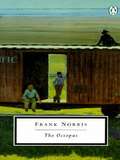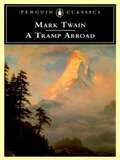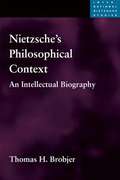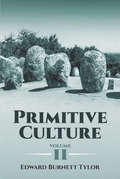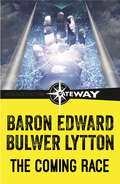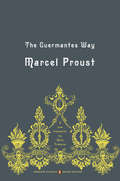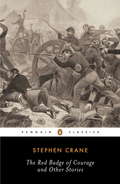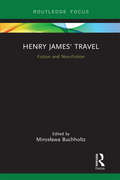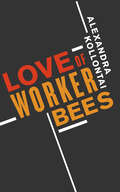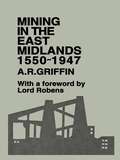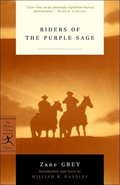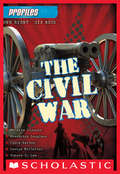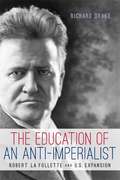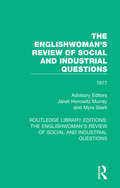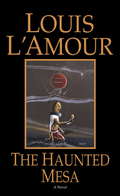- Table View
- List View
The Octopus
by Frank NorrisPurchase of this book includes free trial access to www. million-books. com where you can read more than a million books for free. This is an OCR edition with typos. Excerpt from book: - . . . . . . . ( 1 There had not been much of a crop to haul that year. Half of the wheat on the Broderson ranch load failed entirely, and Derrick himself had hardly raised more than enough to supply seed for the winter's sowing. But such little hauling as there had been had reduced the roads thereabouts to a lamentable condition, and, di: rin i; the dry season of the past few months, the layer of dust had deepened and thickened to such an extent that more than once Presley was obliged to dismount and trudge along on foot, pushing his bicycle in front of him. It was the last half of September, the very end of the dry season, and all Tulare County, all the vast reaches of the San Joaquin Valleyin fact all South Central California, was bone dry, parched, and baked and crisped after four months of cloudless weather, when the day seemed always at noon, and the sun blazed white hot over the valley from the Coast Range in the west to the foothills of the Sierras in the east. As Presley drew near to the point where what was known as the Lower Road struck off through the Rancho de Los Muertos, leading on to Guadalajara, he came upon one of the county watering-tanks, a great, iron-hooped tower of wood, straddling clumsily on its four uprights by the roadside. Since the day of its completion, the storekeepers and retailers of Bonneville had painted their advertisements upon it. It was a landmark. In that reach of level fields, the white letters upon it could be read for miles. A watering-trough stood near by, and, as he was very thirsty, Presley resolved to stop for a moment to get a drink. H- drew abreast of the tank and halted there, leaning his bl vck-. against the fence. A couple of men in white overalls were repainting the surface of the tank, seated i, n swing ', ? platforms. . .
A Tramp Abroad
by Mark Twain Hamlin Hill Robert Gray BruceCast in the form of a walking tour through Germany, Switzerland, France, and Italy, A Tramp Abroad sparkles with the author's shrewd observations and highly opinionated comments on Old World culture, and showcases his unparalleled ability to integrate humorous sketches, autobiographical tidbit, and historical anecdotes in consistently entertaining narrative.
Accidental Anarchist: How the Killing of a Humble Jewish Immigrant by Chicago's Chief of Police Exposed the Conflict Between Law & Order and Civil Rights in Early 20th Century America
by Walter Roth Joe KrausIt was a bitter cold morning in March, 1908. A nineteen-year-old Jewish immigrant traversed the confusing and unfamiliar streets of Chicago–a one-and-a-half-hour-long journey–from his ghetto home on Washburne Avenue to the luxurious Lincoln Place residence of Police Chief George Shippy. He arrived at 9 a.m. Within minutes after knocking on the front door, Lazarus Averbuch lay dead on the hallway floor, shot no less than six times by the chief himself. Why Averbuch went to the police chief's house or exactly what happened after that is still not known. This is the most comprehensive account ever written about this episode that stunned Chicago and won the attention of the entire country. It does not "solve" the mystery as much as it places it in the context of a nation that was unsure how to absorb all of the immigrants flowing across its borders. It attempts to reconstruct the many different perspectives and concerns that comprised the drama surrounding the investigation of Averbuch's killing.
At the Back of the North Wind: Large Print (The Cullen Collection Series #10)
by George MacDonaldThe North Wind takes a young boy along on her many adventures in this classic Victorian fantasy novel by the author who inspired Lewis Carroll. Diamond is a charming young boy who spreads joy wherever he goes. But while he is accustomed to getting along well with others, he never expected to befriend the very wind howling through his bedroom. A mysterious and beautiful spirit, the North Wind soon invites Diamond to fly with her across the countryside as she performs her many tasks. Though Diamond is captivated by his magical adventures with the North Wind, he is also confused by her behavior. While she does many positive things for people, some of her actions seem terrible. Could it be true that what appears to be harmful—even sinking a ship—is ultimately done for good? At the Back of the North Wind is one of the most beloved works by nineteenth-century children’s book writer George MacDonald, who inspired a number of other notable authors, including Lewis Carroll, J. M. Barrie, and L. Frank Baum.
Criminal Man
by Cesare LombrosoCesare Lombroso is widely considered the founder of criminology. His theory of the "born" criminal dominated European and American thinking about the causes of criminal behavior during the late nineteenth century and the early twentieth. This volume offers English-language readers the first critical, scholarly translation of Lombroso's Criminal Man, one of the most famous criminological treatises ever written. The text laid the groundwork for subsequent biological theories of crime, including contemporary genetic explanations. Originally published in 1876, Criminal Man went through five editions during Lombroso's lifetime. In each edition Lombroso expanded on his ideas about innate criminality and refined his method for categorizing criminal behavior. In this new translation, Mary Gibson and Nicole Hahn Rafter bring together for the first time excerpts from all five editions in order to represent the development of Lombroso's thought and his positivistic approach to understanding criminal behavior. In Criminal Man, Lombroso used modern Darwinian evolutionary theories to "prove" the inferiority of criminals to "honest" people, of women to men, and of blacks to whites, thereby reinforcing the prevailing politics of sexual and racial hierarchy. He was particularly interested in the physical attributes of criminals--the size of their skulls, the shape of their noses--but he also studied the criminals' various forms of self-expression, such as letters, graffiti, drawings, and tattoos. This volume includes more than forty of Lombroso's illustrations of the criminal body along with several photographs of his personal collection. Designed to be useful for scholars and to introduce students to Lombroso's thought, the volume also includes an extensive introduction, notes, appendices, a glossary, and an index.
El profesor Unrat
by Heinrich MannMagnífica crítica social, irónica y mordaz. Clara prefiguración de grandes obras contemporáneas como Lolita de Nabokov o La mancha humana de Roth. Raat es un profesor de secundaria solitario, tirano e inflexible. Este hombre, movido por el deber, desprecia la modernidad y la vida de la Alemania de principios de siglo. Se dedica a torturar a sus alumnos a quienes considera un reflejo de una sociedad viciosa e inmoral. Estos le han bautizado como el profesor Unrat, «basura». Los principios de Raat se verán comprometidos cuando sigue a sus alumnos hasta un cabaret de mala muerte con el objetivo de darles una buena lección. Lo que no imaginaba es que la joven, dulce y sensual Rosa Fröhlich, una artista demasiado acostumbrada a vivir de los favores de los hombres, trastocaría todos sus principios y le obsesionaría hasta la locura. Reseña:«El profesor Unrat es quizá la obra de Heinrich Mann que más prestigio ha logrado.»El Mundo
Envisioning Power: Ideologies of Dominance and Crisis
by Eric R. WolfWith the originality and energy that have marked his earlier works, Eric Wolf now explores the historical relationship of ideas, power, and culture. Responding to anthropology's long reliance on a concept of culture that takes little account of power, Wolf argues that power is crucial in shaping the circumstances of cultural production. Responding to social-science notions of ideology that incorporate power but disregard the ways ideas respond to cultural promptings, he demonstrates how power and ideas connect through the medium of culture. Wolf advances his argument by examining three very different societies, each remarkable for its flamboyant ideological expressions: the Kwakiutl Indians of the Northwest Pacific Coast, the Aztecs of pre-Hispanic Mexico, and National Socialist Germany. Tracing the history of each case, he shows how these societies faced tensions posed by ecological, social, political, or psychological crises, prompting ideological responses that drew on distinctive, historically rooted cultural understandings. In each case study, Wolf analyzes how the regnant ideology intertwines with power around the pivotal relationships that govern social labor. Anyone interested in the history of anthropology or in how the social sciences make comparisons will want to join Wolf in Envisioning Power.
How Compassion Made Us Human: The Evolutionary Origins of Tenderness, Trust & Morality
by Penelope SpikinsAn intriguing look at how our capacity to care about and connect with others has contributed to our evolutionary success as a species. Our ability to care about the wellbeing of others, whether they are close family or strangers, can appear to be unimportant in today&’s competitive societies. But in this volume, archaeologist Penny Spikins argues that compassion lies at the heart of what makes us human. She takes us on a journey from the earliest Stone Age societies two million years ago to the lives of Neanderthals in Ice Age Europe, using archaeological evidence to illustrate the central role that emotional connections had in human evolution. Simple acts of kindness left to us from millions of years ago provide evidence for how social emotions and morality evolved, and how our capacity to reach out beyond ourselves into the lives of others allowed us to work together for a common good—and form the basis for human success.
Little Men: Life at Plumfield with Jo's Boys
by Louisa May AlcottThe characters from Little Women grow up and begin new adventures at Plumfield, a progressive school founded by Jo and her husband, Professor Baer.
Nietzsche's Philosophical Context: An Intellectual Biography
by Thomas H BrobjerFriedrich Nietzsche was immensely influential and, counter to most expectations, also very well read. An essential new reference tool for those interested in his thinking, Nietzsche's Philosophical Context identifies the chronology and huge range of philosophical books that engaged him. Rigorously examining the scope of this reading, Thomas H. Brobjer consulted over two thousand volumes in Nietzsche's personal library, as well as his book bills, library records, journals, letters, and publications. This meticulous investigation also considers many of the annotations in his books. In arguing that Nietzsche's reading often constituted the starting point for, or counterpoint to, much of his own thinking and writing, Brobjer's study provides scholars with fresh insight into how Nietzsche worked and thought; to which questions and thinkers he responded; and by which of them he was influenced. The result is a new and much more contextual understanding of Nietzsche's life and thinking.
Primitive Culture Volume I
by Edward Burnett TylorUse of the term "culture" as an expression of the full range of learned human behavior patterns began with this classic two-volume work, first published in 1871. Edward B. Tylor, the first Professor of Anthropology at the University of Oxford, declared that culture is "that complex whole which includes knowledge, belief, art, law, morals, custom, and any other capabilities and habits acquired by man as a member of society." Tylor is credited with the establishment of anthropology as a scientific discipline, and his groundbreaking work was highly influential in the development of cultural evolution as the foundation for anthropologic studies. Tylor's unilinear model of development maintains that humans share a common history, evolving from a single primitive form. His studies of the languages, rituals, and beliefs of societies from around the world pioneered the use of statistical data and substantiated his view of a universal pattern of development in all cultures. Volume I of Primitive Culture focuses on social evolution, language, and myth. Volume II focuses on Tylor's interpretation of animism in society, offering details of the endlessly varied ideas and beliefs regarding the soul, spirits, and gods.
Primitive Culture, Volume II: Researches Into The Development Of Mythology, Philosophy, Religion, Art, And Custom, Volume 2 - Primary Source Edition (Cambridge Library Collection - Anthropology)
by Edward Burnett TylorThe first Professor of Anthropology at the University of Oxford, Edward B. Tylor, defined the term "culture" for modern readers in this groundbreaking work. Initially published in 1871, this classic two-volume study explores the full range of learned human behavior patterns in terms of the beliefs, wisdom, laws, artistic achievements, and mores that constitute a society. The formation of anthropology as a scientific discipline began with this work, which continues to exercise a profound influence on anthropologic studies. The shared history of all humans, a common ground that evolved from primitive roots, constitutes the basis for Tylor's model of development. Drawing upon a worldwide variety of beliefs, rituals, and languages, the author illustrates an all-inclusive pattern of progress. His methods inaugurated the use of statistical data in anthropology, a standard procedure today but a landmark for his time. Volume I of Primitive Culture examines social evolution, language, and myth. The focus of this second volume is animism in society, which explores the tremendous diversity of thinking related to the concepts of the soul and religion as well as the marked similarities of spiritual beliefs.
The Coming Race: Or The New Utopia
by Edward Bulwer-Lytton Anthony PhillipsThe Coming Race draws upon ideas of Darwinism to describe a near-future world characterized by female dominance, physical perfection, and vast technological progress.
The Guermantes Way
by Marcel Proust Mark TreharneAfter the relative intimacy of the first two volumes of In Search of Lost Time, The Guermantes Way opens up a vast, dazzling landscape of fashionable Parisian life in the late nineteenth century, as the narrator enters the brilliant, shallow world of the literary and aristocratic salons. Both a salute to and a devastating satire of a time, place, and culture, The Guermantes Way defines the great tradition of novels that follow the initiation of a young man into the ways of the world. This elegantly packaged new translation will introduce a new generation of American readers to the literary richness of Marcel Proust. First time in Penguin Classics A Penguin Classics Deluxe Edition with french flaps and luxurious design Penguin Classics' superb new edition of In Search of Lost Time is the first completely new translation of Proust's masterwork since the 1920s
The Red Badge of Courage and Other Stories
by Stephen CraneHenry Fleming, a raw Union Army recruit in the American Civil War, is anxious to confirm his patriotism and manhood—to earn his “badge of courage. ” But his dreams of heroism and invulnerability are soon shattered when he flees the Confederate enemy during his baptism of fire and then witnesses the horrible death of a friend. Plunged unwillingly into the nightmare of war, Fleming survives by sheer luck and instinct. This edition of Stephen Crane’s poignant classic is supplemented by five of his acclaimed short stories as well as selected poetry, offering the full range of this great American author’s extraordinary talent. Includes five of Crane's short stories: "The Open Boat", "The Bride Comes to Yellow Sky", "The Blue Hotel", "The Self-Made Man", and "The Veteran" Features a new introduction and notes by American literature scholar Gary Scharnhorst .
Carmilla
by Joseph Le Fanu J. Sheridan Le FanuSink your teeth into the cult classic vampire novella that inspired Bram Stoker&’s Dracula. Fear sweeps the countryside as people fall victim to a strange illness. After a peculiar accident, beautiful Mircalla becomes a ward at Laura&’s family home. Soon, friendship blooms between the mysterious Mircalla and curious Laura. Love is in the air, but so is something deadly. Will Mircalla&’s secret cost Laura her life? Carmilla, originally published in 1872, is one of the first vampire novels ever written, predating Dracula by twenty-six years. Carmilla, with its themes of vampirism and homosexuality, shocked the standards and stereotypes for women set in the Victorian era. Today, Carmilla is considered the original archetype of female and LGBTQ vampires, and Le Fanu&’s influence is seen throughout vampire fiction.
Henry James' Travel: Fiction and Non-Fiction
by Mirosława BuchholtzHenry James’ Travel: Fiction and Non-Fiction offers a multifaceted approach to Henry James’ idea and practice of travel from the perspective of the globalized world today. Each chapter addresses a different selection of James’ fiction and non-fiction and offers a different approach towards the ideas that are still with us today: history reflected in art and architecture, the tourist gaze, museum culture, transnationalism, and the return home. As a whole, the book encompasses both early and late fiction and non-fiction by Henry James, giving the reader a sense of how his idea of travel evolved over several decades of his creative activity and shows how thin the line between fiction and non-fiction travel writing really is.
Love of Worker Bees
by Alexandra KollontaiA rare, graphic portrait of Russian life in 1917 immediately after the October Revolution. The heroine struggles with her passion for her husband, and the demands of the new world in which she lives.
Mining in the East Midlands 1550-1947
by A.R. GriffinFirst Published in 1971. Routledge is an imprint of Taylor & Francis, an informa company.
Riders of the Purple Sage: Large Print
by Zane GreyThe canyons and sage plains of Utah have a dangerous beauty. Skilled riders must go out every day and night to protect the herds and the homesteads from cattle rustlers. Stories of a masked man and a lone gunman looking for vengeance have spread across Utah. There has long been a feud between Gentiles and Mormons. A feud that Jane Withersteen, daughter of the man who founded the Mormon settlement of Cottonwood, chooses to ignore. When Mormon Elder Tull discovers that the woman he means to make one of his wives has offered hospitality to an outsider he vows vengeance but he underestimates her courage and the determination of the riders of the plains.
Roughing It: The Authorized Uniform Edition
by Mark TwainThe Wild West as Mark Twain lived it In 1861, Mark Twain joined his older brother Orion, the newly appointed secretary of the Nevada Territory, on a stagecoach journey from Missouri to Carson City, Nevada. Planning to be gone for three months, Twain spent the next &“six or seven years&” exploring the great American frontier, from the monumental vistas of the Rocky Mountains to the lush landscapes of Hawaii. Along the way, he made and lost a theoretical fortune, danced like a kangaroo in the finest hotels of San Francisco, and came to terms with freezing to death in a snow bank—only to discover, in the light of morning, that he was fifteen steps from a comfortable inn. As a record of the &“variegated vagabondizing&” that characterized his early years—before he became a national treasure—Roughing It is an indispensable chapter in the biography of Mark Twain. It is also, a century and a half after it was first published, both a fascinating history of the American West and a laugh-out-loud good time. This ebook has been professionally proofread to ensure accuracy and readability on all devices.
The Civil War: The Civil War (Profiles #1)
by Aaron RosenbergFind out how the key players from yesterday and today influenced and interacted with each other during the world's most important moments in this full-color biography series.One event. Six people. It takes more than one person to bring about change and innovation. So much more than just your typical biography, Profiles focuses on six of the most prominent figures during the Civil War. This book includes all of the biographical information kids need to know (background, family, education, accomplishments, etc.) about Abraham Lincoln, George McClellan, Matthew Brady, Clara Barton, Robert E. Lee, and Frederick Douglass. Find out why they were so important to the war and each other. Photographs, maps, and quotes are interwoven throughout the text.
The Education of an Anti-Imperialist
by Richard DrakeRobert M. La Follette (1855-1925), the Republican senator from Wisconsin, is best known as a key architect of American Progressivism and as a fiery advocate for liberal politics in the domestic sphere. But "Fighting Bob" did not immediately come to a progressive stance on foreign affairs. In "The Education of an Anti-Imperialist," Richard Drake follows La Follette's growth as a critic of America's wars and the policies that led to them. He began his political career with conventional Republican views of the era on foreign policy, avidly supporting the Spanish-American and Philippine-American Wars. La Follette's critique of empire emerged in 1910, during the first year of the Mexican Revolution, as he began to perceive a Washington-Wall Street alliance in the United States' dealings with Mexico. La Follette subsequently became Congress's foremost critic of Woodrow Wilson, fiercely opposing United States involvement in World War I. Denounced in the American press as the most dangerous man in the country, he became hated and vilified by many but beloved and admired by others. La Follette believed that financial imperialism and its necessary instrument, militarism, caused modern wars. He contended they were twin evils that would have ruinous consequences for the United States and its citizens in the twentieth century and beyond.
The Englishwoman's Review of Social and Industrial Questions: 1877 (Routledge Library Editions: The Englishwoman's Review of Social and Industrial Questions #10)
by Janet Horowitz Murray and Myra StarkThe Englishwoman’s Review, which published from 1866 to 1910, participated in and recorded a great change in the range of possibilities open to women. The ideal of the magazine was the idea of the emerging emancipated middle-class woman: economic independence from men, choice of occupation, participation in the male enterprises of commerce and government, access to higher education, admittance to the male professions, particularly medicine, and, of course, the power of suffrage equal to that of men. First published in 1979, this tenth volume contains issues from 1877. With an informative introduction by Janet Horowitz Murray and Myra Stark, and an index compiled by Anna Clark, this set is an invaluable resource to those studying nineteenth and early twentieth-century feminism and the women’s movement in Britain.
The Haunted Mesa
by Louis L'AmourThe Navajo called them the Anasazi, the "ancient enemy," and their abandoned cities haunt the canyons and plateaus of the Southwest. For centuries the sudden disappearance of these people baffled historians. Summoned to a dark desert plateau by a desperate letter from an old friend, renowned investigator Mike Raglan is drawn into a world of mystery, violence, and explosive revelations. Crossing a border beyond the laws of man and nature, he will learn of the astonishing world of the Anasazi and discover the most extraordinary frontier ever encountered.From the Paperback edition.
